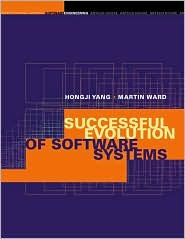In today's fast-changing, competitive environment, having an up-to-date information system (IS) is critical for all companies and institutions. Rather than creating a new system from scratch, reengineering is an economical way to develop an IS to match changing business needs. Using detailed examples, this practical book gives you methods and techniques for reengineering systems for flexibility and reliability. It helps you reengineer a system to continue to provide for business critical missions as well as achieve a smooth transformation to an up-to-date software technology environment. What's more, it shows you how to redevelop a flexible system that can evolve to meet future business objectives, reduce start time and save money in the reengineering process.
In today's fast-changing, competitive environment, having an up-to-date information system (IS) is critical for all companies and institutions. Rather than creating a new system from scratch, reengineering is an economical way to develop an IS to match changing business needs. Using detailed examples, this practical book gives you methods and techniques for reengineering systems for flexibility and reliability. It helps you reengineer a system to continue to provide for business critical missions as well as achieve a smooth transformation to an up-to-date software technology environment. What's more, it shows you how to redevelop a flexible system that can evolve to meet future business objectives, reduce start time and save money in the reengineering process.

Successful Evolution of Software Systems
300
Successful Evolution of Software Systems
300Hardcover

Product Details
| ISBN-13: | 9781580533492 |
|---|---|
| Publisher: | Artech House, Incorporated |
| Publication date: | 01/28/2003 |
| Series: | Computer Library |
| Pages: | 300 |
| Product dimensions: | 7.30(w) x 9.30(h) x 1.00(d) |
